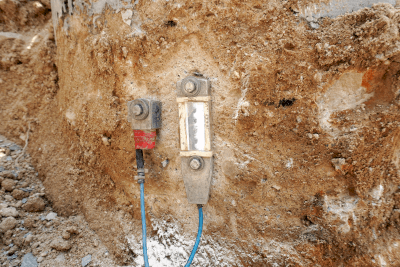What Is a Strain Gauge?

A strain gauge is a measuring instrument used to measure the strain of an object. Strain refers to the amount of deformation that occurs in a material when an external force is applied to it. Measuring strain is essential for determining stress levels and evaluating the strength and reliability of a structure.
A strain gauge sensor detects the strain in a material, and this minute voltage signal is then input to a strain gauge to measure the extent of the strain. Strain gauges are capable of performing multi-channel measurements.
Uses of Strain Gauges
Strain gauges are indispensable measuring instruments used to ensure the strength and reliability of various structures. In addition to measuring stress, strain gauges can also be used to measure physical quantities such as temperature, pressure, load, and displacement.
Due to their versatility, strain gauges find applications in a wide range of industries, including automotive, industrial machinery, electronics, and metal and steel. For example, hydraulic excavators operate in challenging conditions, such as soil excavation and rock breaking. Consequently, strain gauges are used in research and development to assess the structural strength of such equipment.
Principles of Strain Gauges
There are various types of strain gauges, but we will introduce the principle of strain gauges that are connected via a bridge circuit.
Firstly, strain gauges are employed to detect the strain in an object. Strain gauges function on the principle of altering electrical resistance as the structure expands and contracts due to strain. This change in electrical resistance is measured to determine the strain. Subsequently, within a bridge circuit, the electrical resistance observed by the strain gauge is converted into a voltage change. This signal is then transmitted to the strain gauge. Given that the voltage obtained from the bridge circuit is minute, it is amplified using a built-in amplifier. The amplified signal is converted into digital form (analog-to-digital conversion), and the data is output to a computer. Some strain gauges come equipped with a built-in bridge circuit.
Strain gauges are capable of measuring static strain (steady-state strain) as well as dynamic strain (strain occurring at frequencies of up to several hundred kilohertz, often due to impacts and other dynamic events).